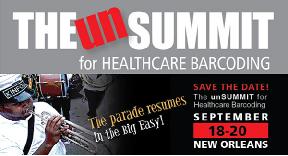 | |
I’ve been thinking about presidents, engineers, nurses, and the law of unintended consequences. The bulk of the word consequence is sequence. In sequence, outcomes (intended or not) follow actions. Typically, consequences is used in reference to negative outcomes. In 1974, Richard Nixon had neither intended nor anticipated the devastating sequence of events that would follow the Watergate break-in and subsequent cover-up. He had not expected his actions would expose additional abuses of power, provoke articles of impeachment, and force his resignation. We were glued to our televisions to witness the consequences. On June 26, 1974, nine days after the Watergate break-in, a breakthrough took place. Off the beaten path at a supermarket in Troy, Ohio, bar-code scanning at the point of sale was born. Though unnoticed by Walter Cronkite (CBS cameras were focused on Washington, D.C.), what happened in Troy would have far greater consequences than Nixon’s downfall—unintended consequences that would eventually extend beyond grocery stores and reach around the world. Meanwhile, 666 miles due east on I-70, a devoted RN, Sue Kinnick, was quietly caring for her patients at the VA Medical Center in Topeka, Kansas. While she was fully aware of the debacle in the Beltway, she was outside the loop on the development in Troy, even though it held a clue to the outstanding legacy she would leave on patient safety. A bit of backstory: The year I graduated from high school with the class of ’66, the National Association of Food Chains had asked grocery-equipment manufacturers across the country if they could come up with an auto-identification system that would speed shoppers through checkout lines. Within three years, shortly after Nixon took office, National Cash Register (NCR) successfully interfaced their computerized registers with code-reading scanners. Lacking a standardized code to scan, the grocer’s association formed its Ad Hoc Committee on a Uniform Grocery Product Code, which invited fourteen of America’s leading companies to compete in creating a machine-readable code for their industry. IBM engineer, George Laurer, hunkered down and solved the riddle. His Universal Product Code (UPC) code was selected from seven other entries, and in 1974, the Uniform Product Code Council (now GS1 US) was formed to establish and administer a corresponding uniform-numbering system. Forty June 26’s have come and gone since a ten-pack of Wrigley’s Juicy Fruit gum served as the first product to have its bar code scanned. These days, more than six billion UPC codes are scanned every 24 hours. Two decades after Troy, Sue Kinnick was vacationing in Seattle. Upon returning a Hertz car at SeaTac, she was impressed that the agent could retrieve her rental record just by scanning the bar code on the windshield—so impressed that she nearly missed her flight by asking questions. Upon resuming work in Topeka, she asked the medical center’s IT department if they could create something like this for positively identifying patients. She was convincing. The geeks were cooperative. And within a few years, bar-code scanning at the point of care was born. Sue nurtured this baby while fighting cancer. Her vision for the hospital, though not fully realized before she died, was shortly thereafter implemented not only in Topeka but also in every VA hospital in the country while the rest the nation’s hospitals watched. Nixon’s White House could have predicted the unintended consequences of breaking into the Democratic National Headquarters more easily than the grocery industry’s brain trust, and George Laurer could not have imagined how his UPC code would change how we do business around the world. For sure, they anticipated how scanning would speed up grocery lines, increase accuracy, print detailed receipts with product descriptions and prices, not to mention how scanning could help stores keep their shelves stocked with the right products, all the while reducing costs from efficiencies gained. But no one had foreseen how all this would pave the way for FedEx to transport and deliver the right packages to the right recipients at the right times or that hospitals would one day use bar-code scanning to ensure that the right medications were given to the right patients at the right times. Sue Kennick could not have known that her idea would impact the rest of the VA system, let alone most hospitals across America. She could not have imagined that bar-code scanning would make its way into hospitals around the globe, protecting caregivers, preventing harm, and saving lives. Not all unintended consequences are negative. The day after the market in Troy celebrated 40 years of scanning, I talked with Sharon Buchanan, the checkout clerk who passed that historic pack of Wrigley’s over the laser scanner. She was eager to tell me how cool it was that when her husband of 50 years was recently admitted to the hospital, nurses scanned his wristband and medications for a match. In L’Abri (1969), author Edith Schaeffer observed, “The thing about real life is that important events don’t announce themselves. Trumpets don’t blow, drums don’t beat . . . Usually something that is going to change your whole life is a memory before you can stop and be impressed about it.” While I think it’s worth pondering, it’s often impossible to anticipate exactly how or to what extent our work will impact others. Maybe it’s enough to remember that our actions and labors, whether they are archived in Wikipedia or not, are followed by consequences. For good or for ill, what we sow is what we (and others) reap—often in unintended proportions. What do you think? Mark Neuenschwander aka Noosh Perhaps you’d be wiling to e-mail news of The unSUMMIT to a colleague.
©2014 The Neuenschwander Company | ||||||||
 | ||||||||
 | ||||||||



